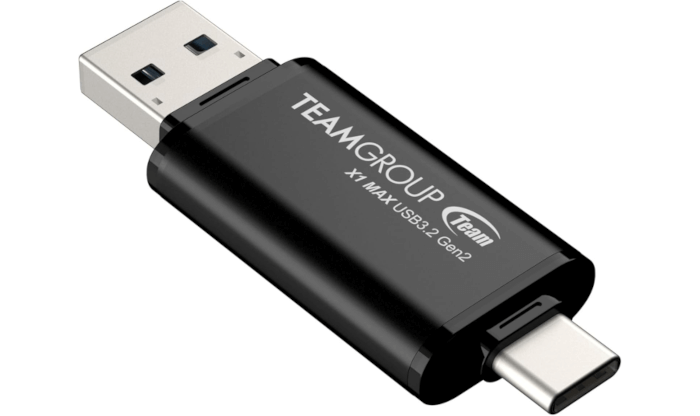Comparison Benchmarks
It’s interesting to compare benchmarks between a flash drive and a SSD. I’m not comparing apples to apples of course. To make it a fairer comparison, I chose a few inexpensive SSDs typically found in low cost mini PCs. For the SSDs, only the BX500 is from a ‘mainstream’ SSD company.
I benchmarked each disk/drive with an Intel NUC that supports USB 3.2 Gen 2, USB 3.1, and SSDs. For the TEAMGROUP flash drive, I’m only showing the results with USB-C.
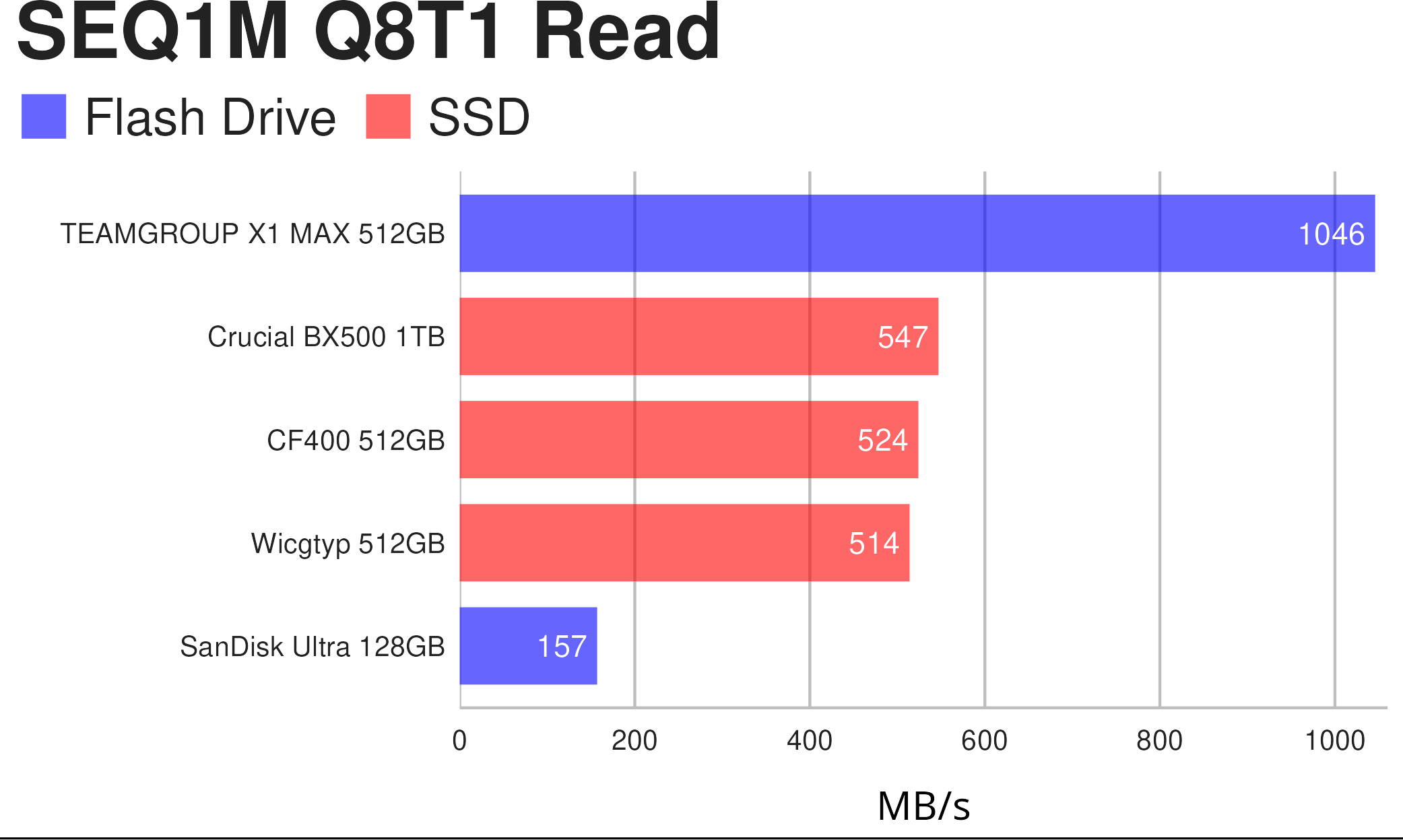
The TEAMGROUP drive lives up to its advertised 1000 MB/s read speeds. In fact, it’s slightly faster. This benchmark is useful for tasks such as high-resolution video editing. The other flash drive (SanDisk) is more capable than many flash drives, but its blown away by the TEAMGROUP drive. And none of the SSDs come close either.
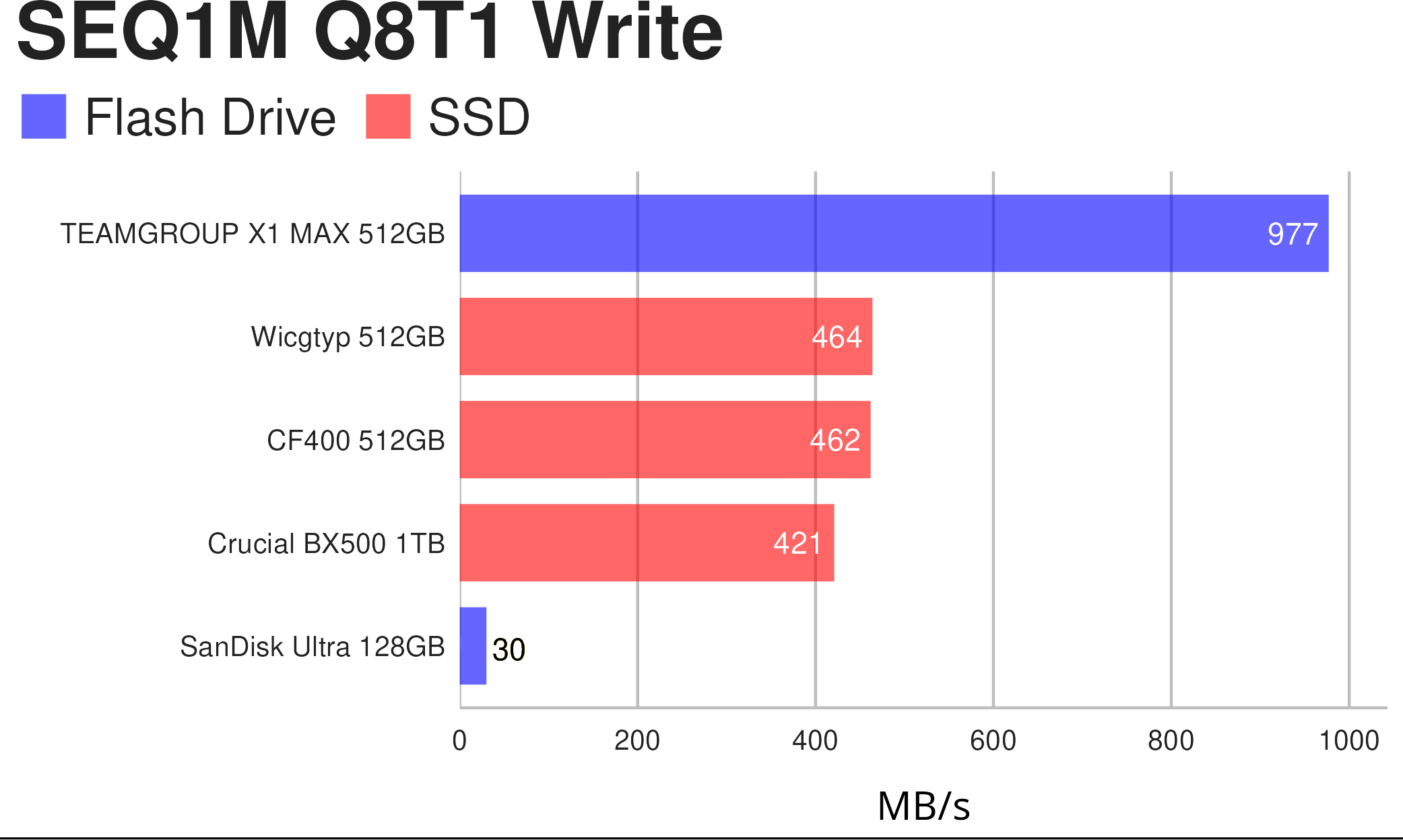
In this second sequential test, the X1 Max again is night and day better than the others. Its advertised sequential write speed is 900 MB/s. As you can see, it performs even better.
The TEAMGROUP flash drive is more than twice as fast compared to the budget SSDs. And the SanDisk’s flash drive is so poor in comparison I had to manually edit the image to show its write speed. For reference, I’ve tested many other flash drives with even lower scores than the SanDisk.
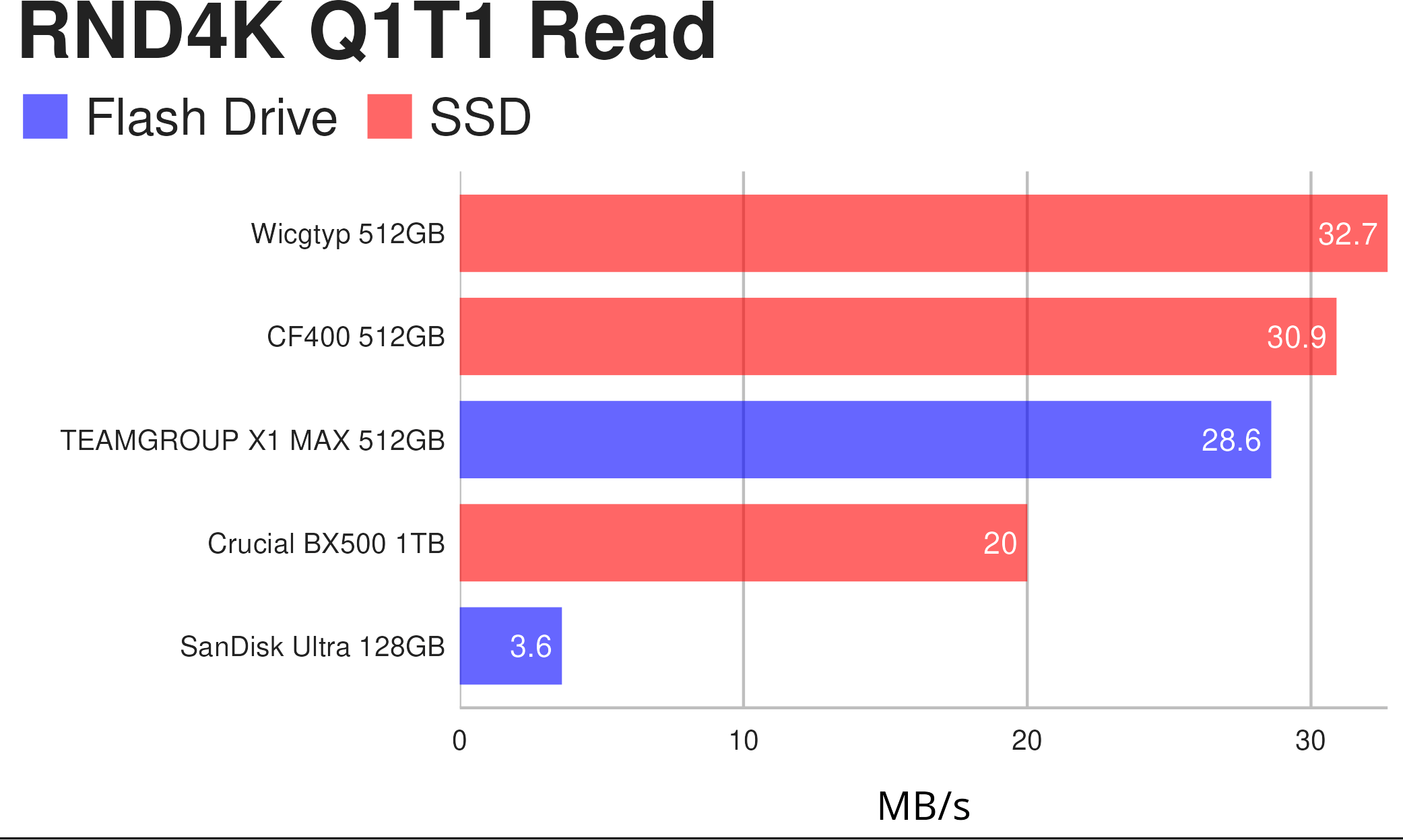
For small files, I’m impressed with the performance of the TEAMGROUP flash drive. For random reads, it’s comparable to the SSDs. The less said about the SanDisk flash drive the better.
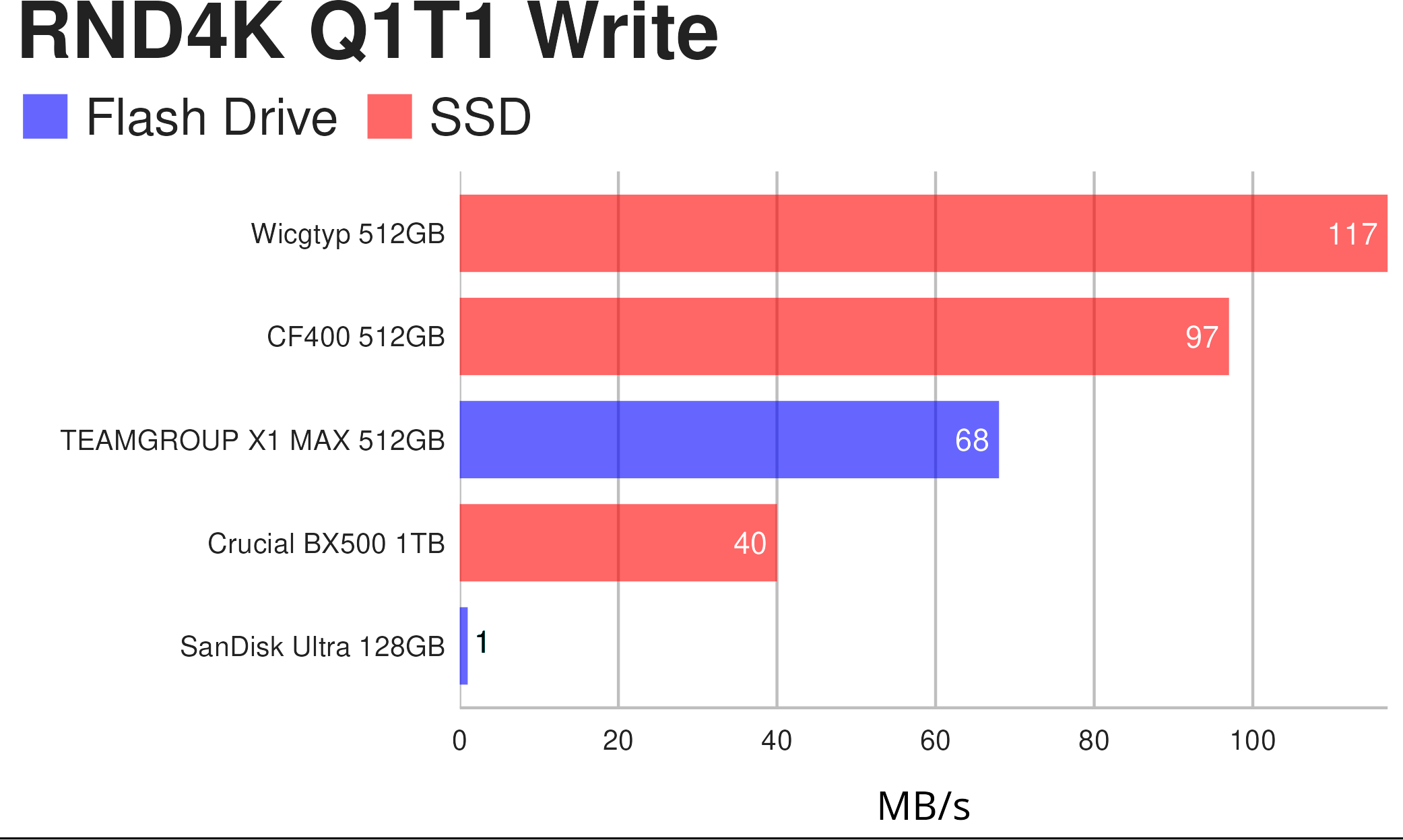
Most flash drives struggle with this benchmark. Look at how far behind the SanDisk Ultra benchmarks. The TEAMGROUP flash drive actually beats one of the SSDs in the test! Low queue random operations are essential for daily usage, affecting work on multiple small files.
Pages in this article:
Page 1 – Introduction, Specifications and Benchmarks
Page 2 – Comparison Benchmarks
Page 3 – Summary
